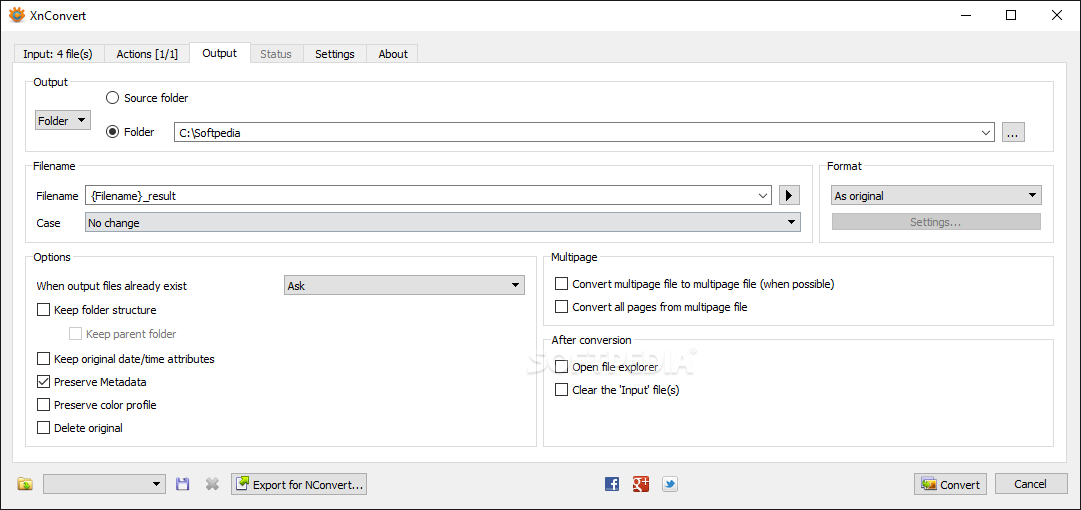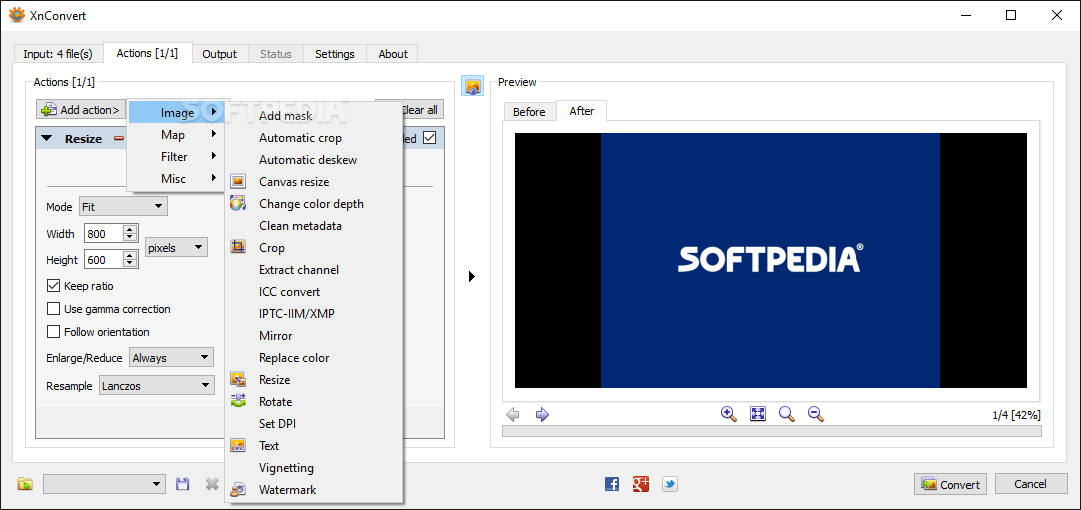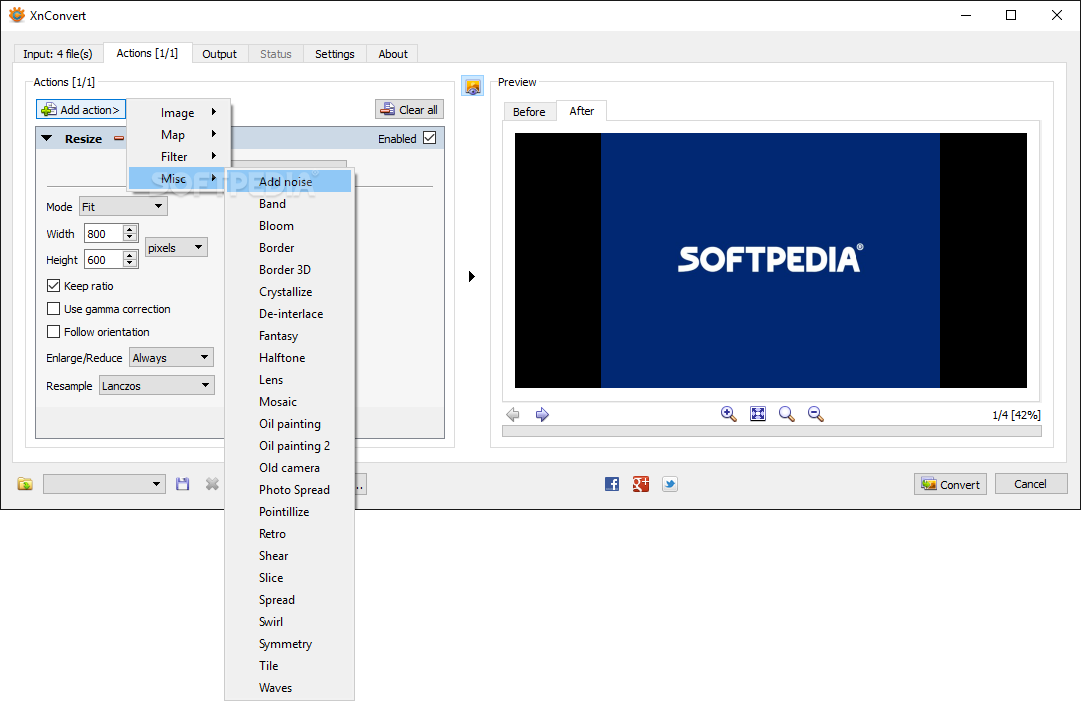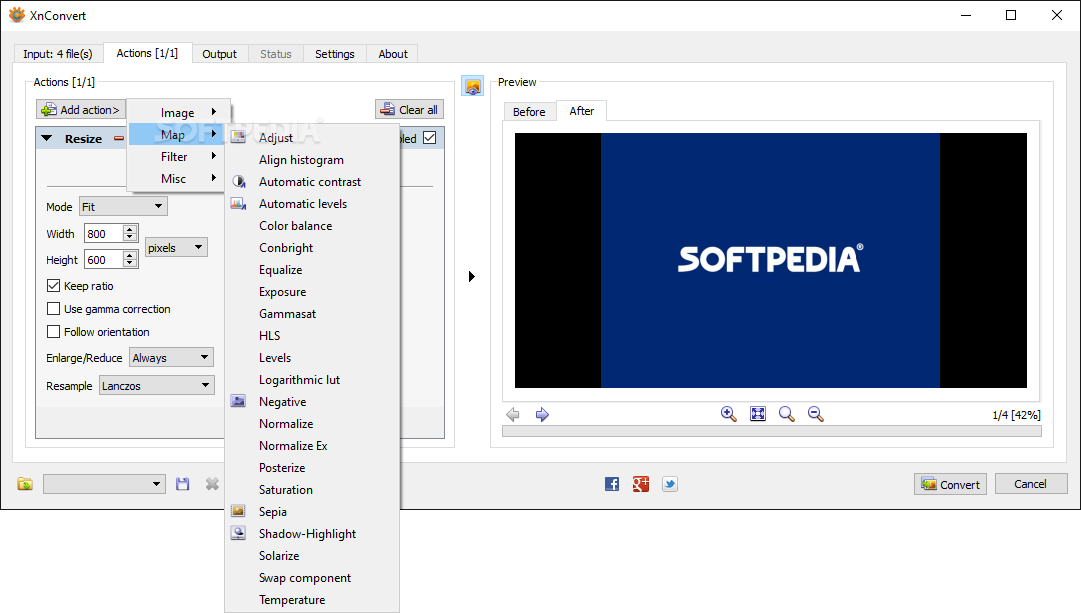

So I won't suggest you to try but if you are expecting me to do the example, ok. If we wish to maximum compress a maximum compressed file like this, we'll face some overhead data inserted in the file and it will result in a bigger file size. (suspense music with congas please) 433.7 KILOBYTES With this instruction, we are asking the image to be resized to be 1024 pixels wide by any amount of pixels needed in order not to lose aspect ratio. So let's do this: convert seminario-tabloide.png -resize 1024x test-1024x.jpg A couple of things indeed: We can first resize the images and apply compression after that, which will result in a smaller file size than the original, and will deliver a useful image for rendering on screen, not so good for printing but it seems we need to display it on screen and not in a printed banner, right? Which will result in a compressed file that it's not visually affected when rendered on screen, but you will see the artifacts when printing in a big paper size (bigger than letter). Please have in mind that in this example we're reducing the quality of the file, not the image dimensions.

We can go further and create a smaller file size by adjusting the percentage in the same command via: convert test.jpg -quality 30% test-30p.jpg This is going to reduce the image's quality by 50% and deliver a 938.4 KB <= (Note: KILOBYTES, not even a Megabyte) filesize. This is what we need to do in order to "compress" an image. Let's now play with some other ImageMagick convert commands in order to create smaller file sizes: convert test.jpg -quality 50% test-50p.jpg This is going to convert the high definition PNG format into a "compressed" JPG format, which by itself is a smaller file! It goes from 9.5 MB to 2.4 MB.īut, 2.4 MB is yet a big file size. So, let's drop the next in a terminal: convert seminario-tabloide.png test.jpg So, how can I use this image in a website, without waiting years in order to upload and waiting some other years in order to show it in my website? The file should be compressed.Īnd when we talk about "compression" we explicitly need to change it's quality in order to make it usable for the case we are facing.

So that's a different scenery which I won't cover in this explanation. Nevertheless, the image size and grid resolution is really useful for a high definition printing. In the file properties window we can see this is a 9.5 MB file, which will delay a lot to upload and will delay a lot in order to render on screen when published in a website. High Definition Pictures, with resolutions over 1024px may have a big file size. Let's first understand what a "lightweight picture" should be.

The picture MUST be "compressed" in order to lose file size but not "rezised" as refered by another user who pointed to a duplicated on this question JPG batch compression & rename (find -exec, xargs, piping?).Let's understand what the answer need to solve: Many of the answers seems to refer to other things, mostly caused because of -probably- they haven't faced such scenery. Which won't affect if we were working in a local testing production environment. Let's face that Web designers, Web developers and/or Web masters need to "compress" our image files in order to make them enough "lightweight" to be quickly uploaded to our hosting if we're working directly on a real production environment. The "compression" word seems to be misinterpreted in this question, but it's yet valid depending on the context you wish to see this.


 0 kommentar(er)
0 kommentar(er)
